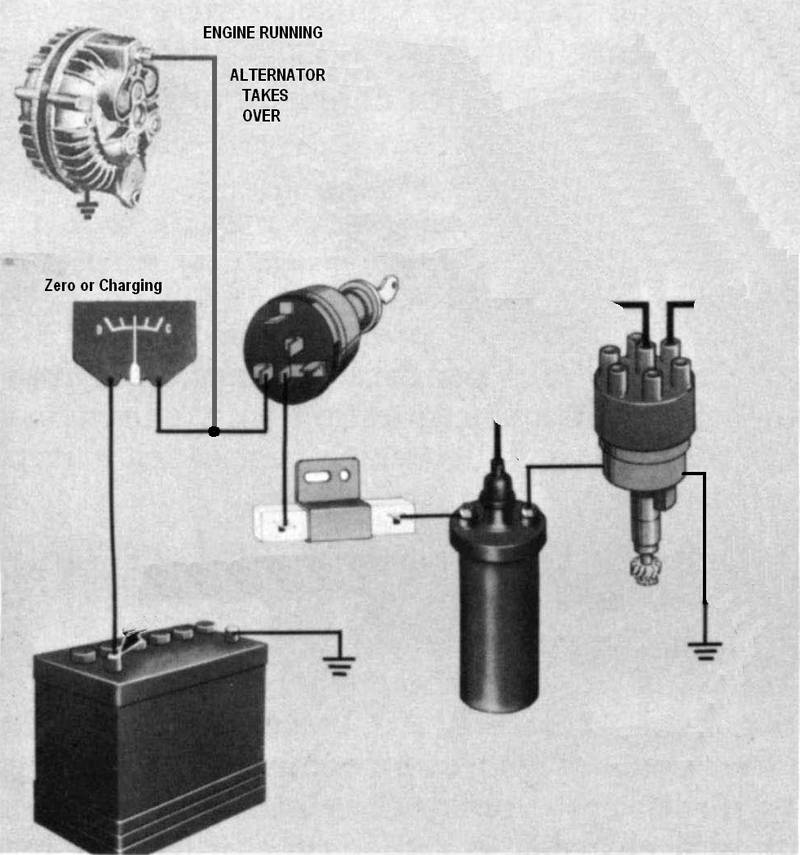The battery was at 13.2 and 5.5 to the ballast and 5.4 to the coil.
The problem I encountered is a no start issue. and no spark to the plugs. I though maybe the ballast went bad....time to check some other things. Note. that the end of the ballast was loose, and when I tried to tight it, it broke off. so I need to replace that.
In Run, engine off, the voltage of the current flowing into the reistor should be within a 1/2 Volt of the battery reading taken at the same time.
I don't believe the battery was at 13.2 Volts while the key was switch on.
12.8 Volts is about maximum for the stored power.
Readings above that are usually surface charge. Surface charge disapates very quickly when a load is placed across the battery (flip the lights on, dome light, etc).
Under very heavy load, the votlage will termporarily drop lower. For example, during starting the voltage will drop down to 10 Volts or a even less depending on battery condition.
Chrysler tech used 9.6 Volts
at the coil as the rule of thumb when measuring at the coil
during start.
And a maximum of 1/2 Volt drop between battery and run circuit with
key in run and
engine off.
p. 9, 1969 Ignition System Analysis
http://www.imperialclub.com/Repair/Lit/Master/259/Page09.htmMight want to print that pamphlet. Not sure how much longer the Imperial Club website will be around.
(link to larger printable version of available at bottom of page)

